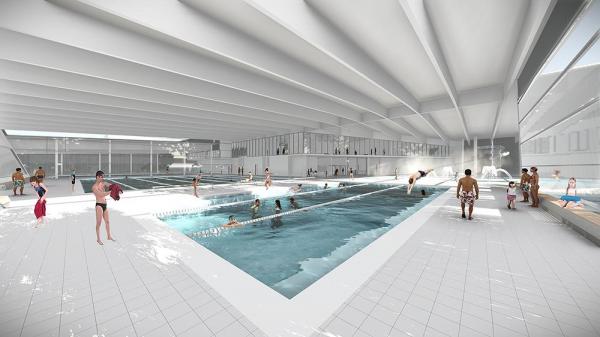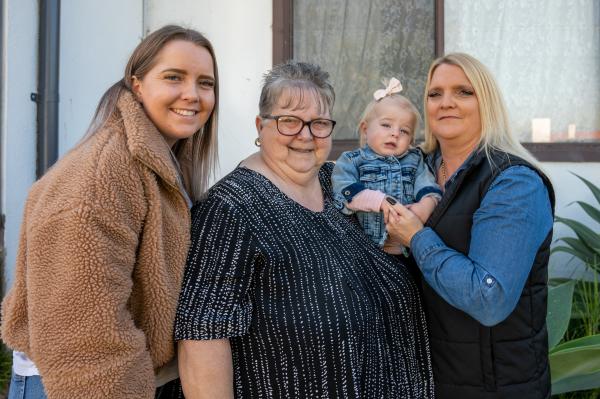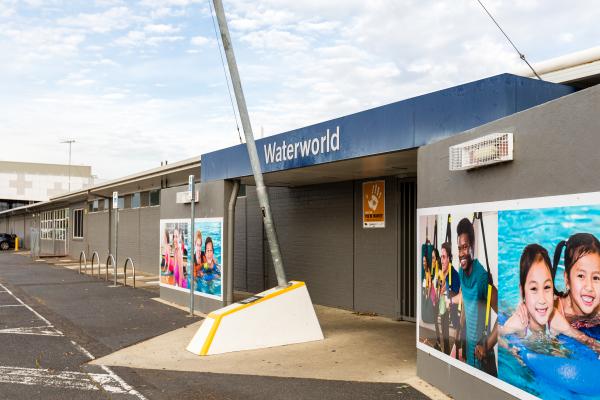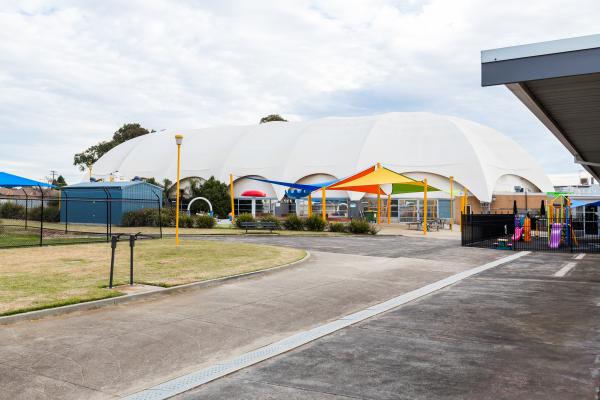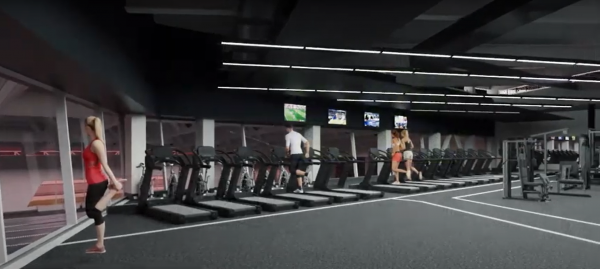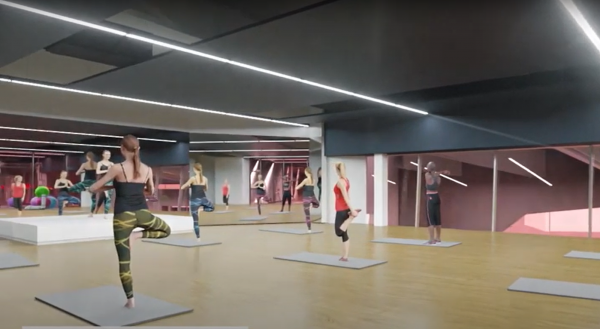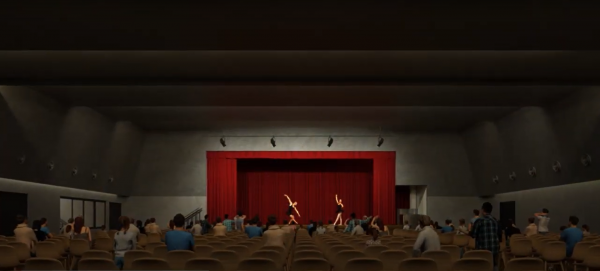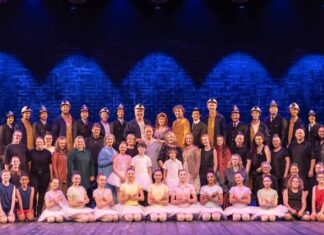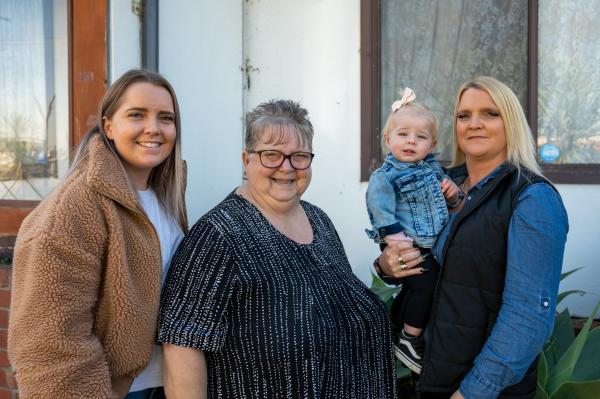
Norlane great-grandmother Sandra Anderson was the first of four generations in her family to go swimming at Waterworld in Norlane.
She shares her excitement with Luke Voogt about a “life-changing” and “long-awaited” project to redevelop the site, now on the “cusp of reality”.
Life-long Norlane resident Sandra Anderson was among the first of thousands of teens to spend summers at Waterworld in the late 1960s.
“As kids we used to ride to the Norlane pool,” she said.
“You’d towel yourself off and by the time you were home, you’d be hot again.”
Sandra, 67, is the first of four generations in her family who have enjoyed the once-iconic pool, built in 1965.
“My kids would ask, ‘can we go to the pool mum?’ and I would say, ‘yep, here’s some money’,” she said.
“They’d take some chips and they were gone for the day.
“I never had to worry about them. They would meet their friends there and come home for dinner at night.”
Decades on, Sandra has enjoyed taking her grandchildren and, most recently, great-granddaughter Elly to Waterworld.
“At one stage I was doing water aerobics there too but I think I got more exercise taking Elly,” she laughed.
“My granddaughter Felicity takes Elly to the pool whenever she gets the chance.”
Felicity lives in neighbouring suburb Corio, as does Sandra’s daughter Pauline, a regular visitor to Waterworld’s gym prior to COVID-19.
But Waterworld, like Sandra, has seen better days, she admits.
“It’s well past its use by date,” Sandra said.
“I’m getting up in age too with arthritis in my knees.
“I use a walking stick; my left knee is bad and my right knee is getting just as bad.”
Waterworld, on the other hand, is struggling with an operational loss of about $1 million a year and increasing costs to repair the “deteriorating” building, according to council.
These costs are growing by five per cent annually, according to a 2017 council business case for a new preventative health facility to redevelop the site and its “aging assets”.
While refurbished sections of the building are in good condition, “the age of the facility” has caused cracks in its “exterior and interior walls”, according to the document.
This, coupled with declining membership due to competition from private gyms and pools, has limited “Waterworld’s ability to remain financially sustainable”, according to council.
Waterworld’s second-most profitable revenue stream, Learn to Swim programs, cannot keep pace with demand and its design limits the ability to expand the program, council said.
In 2010-11, 368,874 people visited Waterwold, dropping by almost a quarter to 281,318 in 2014-15.
By comparison, Waurn Ponds facility Leisurelink, built in 2010, has about 1.2 million visits per year generating enough revenue to cover operating and maintenance requirements.
In a review this February, council reaffirmed Waterworld Leisure Centre’s “ageing community facilities” do “not meet the needs” of current or future residents.
The review found council’s planned Northern Aquatic and Community Hub redevelopment of the site “will deliver $1.79 of economic benefit for every $1 invested” and attract 600,000 visits per year.
The new facility will deliver $111 million in preventative health benefits in its first decade of operation, combatting high rates of obesity, “sedentary lifestyles” and psychological stress in the “disadvantaged” north, according to council.
In 2018 council removed the iconic Waterworld slide to make way for the redevelopment, several years in the making.
“It used to be an icon,” Sandra said.
“When you see the big slide, you know you’ve hit Norlane.”
But Sandra cannot wait for the new facility, which council says is now “on the cusp of reality”.
“The kids are going to thoroughly enjoy the new slides,” she said.
And the slides are just part of the excitement for Sandra.
The plans include a 25-metre pool, a hydrotherapy pool, a Learn to Swim pool, a water play area, a spa, a sauna and a steam room.
Sandra and husband Maurice, who has a back-related disability, plan to take full advantage of the facilities.
“The hydrotherapy pool will do us wonders,” Sandra said.
The plans also include a café, a gym, a cycle studio, multi-purpose exercise studios, maternal health suites, a creche and a 400-person hall that council says “will be the best of its kind in greater Geelong”.
Last month council decided to allocate $21.84 million to the project, on top of its $23 million already committed.
If approved in the 2021-22 budget, this would bring council’s commitment to the $61.6 million project to $44.84 million.
Council also plans to allocate $8.26 million from a federal government community infrastructure program, and recently secured $8.5 million from state government for the project.
Council hopes its extra commitment will help secure another $10 million in federal government’s Building Better Regions Fund, which requires projects to be fully-funded and ready for construction.
If successful, council’s total commitment would reduce to $34.84 million.
Sandra agrees with council that the “long-awaited” facility is desperately needed.
“People are living longer and want to be more active,” Sandra said.
“We need this sort of facility to keep living at home longer.
“There’s going to be a lot of suburbs that will benefit from this facility – North Shore, Bell Post Hill, even as far as Anakie.
“Lovely Banks and Lara are building up. It’s not just Norlane and Corio, it’s bigger than that.”


